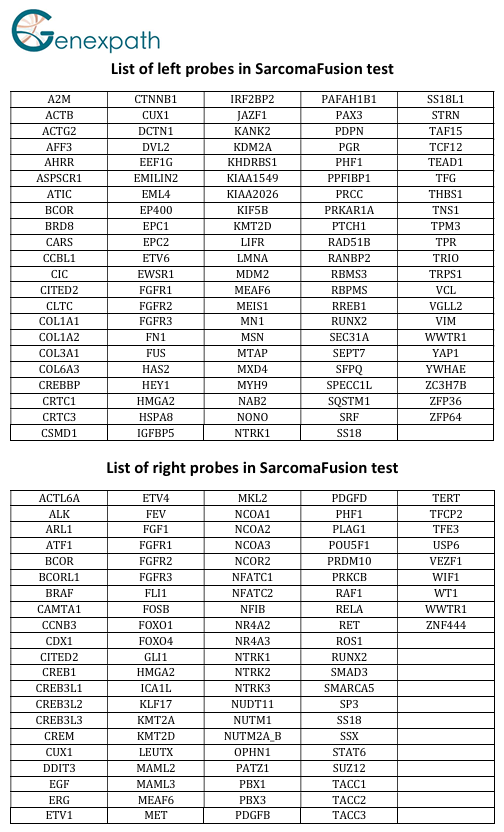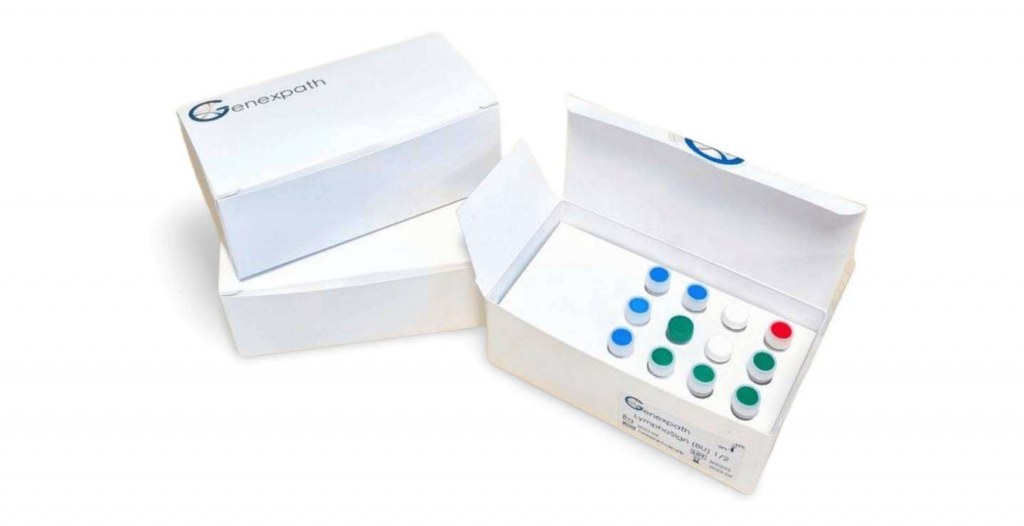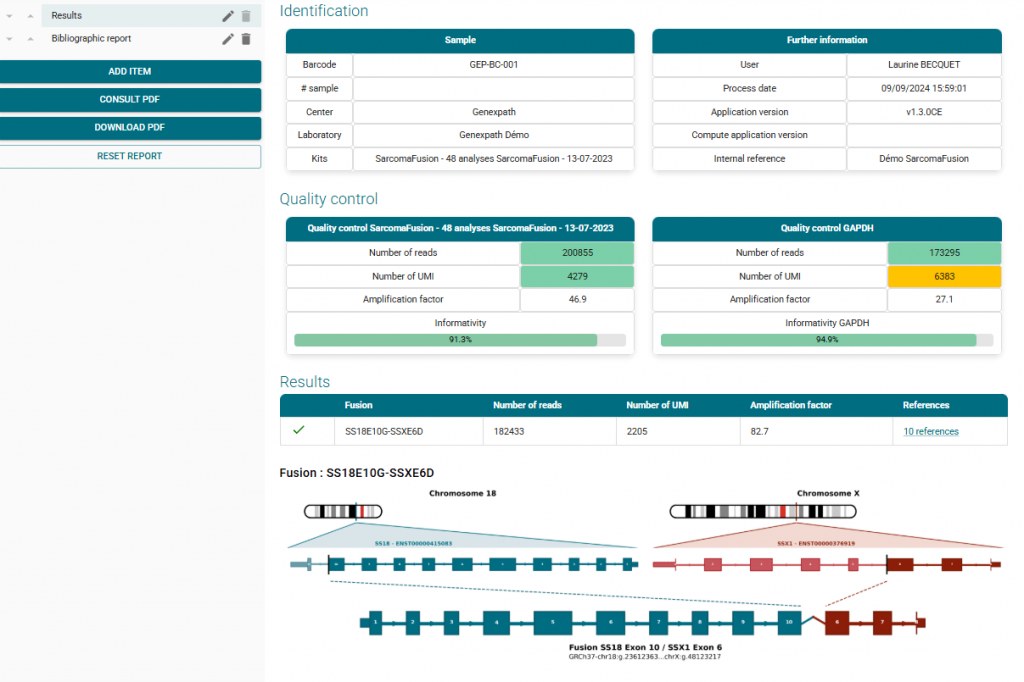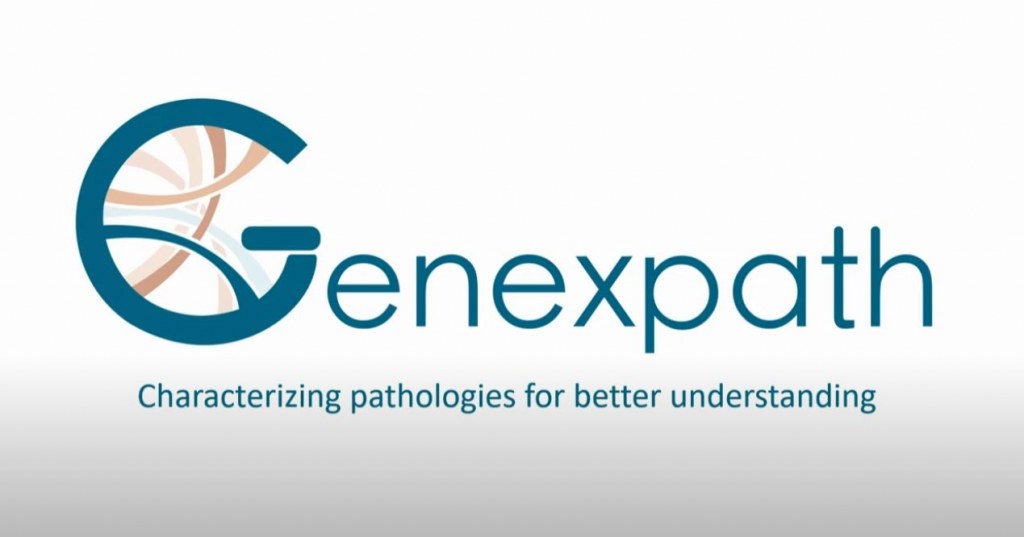The SarcomaFusion test contains probes specific to the left and right partners of fusion transcripts described in the literature associated with sarcomas.
Sarcoma diagnostic in a single reaction
Fusion transcripts are found in approximately one-third of soft tissue tumors, and to date, the literature has described more than 210 fusions. They are often associated with a particular histological subtype and, consequently, with specific treatments. Thus, they constitute ideal molecular diagnostic markers.
The detection of these fusion transcripts is essential for patient management.
The SarcomaFusion test enables the detection of fusion transcripts identified in sarcomas in a single test.
This test is CE-IVD marked for in vitro diagnostic use, ensuring compliance with European safety and performance requirements.
Examples of Fusion Transcripts
Alveolar Rhabdomyosarcoma
- Fusions PAX3::FOXO1 and PAX3::NCOA1
- Possible treatments:
- Chemotherapy
- Pazopanib (PDGFa, VEGF-1)
- Sorafenib (PDGFR, VEGFR, MAPK)
- Crizotinib (MET, ALK, ROS1)
- Temsirolimus (mTOR)
- Cixutumumab (IGF-1R)
- Radiotherapy
Ewing Sarcoma
- Fusions EWSR1::FLI1, EWSR1::ETV1, EWSR1::FEV, and other EWSR1 partners
- Possible treatments:
- Surgery
- Chemotherapy
- Radiotherapy
- CAR-T cell therapy
Epithelioid Hemangioma
- Fusion ACTB::FOSB
- Possible treatments:
- Surgery
- Chemotherapy
- Radiotherapy
Test Characteristics
SarcomaFusion is a unique, highly robust, and sensitive test designed for pathologists and molecular biologists.
Based on ligation-dependent PCR technology (RT-MLPSeq), this test enables the detection of fusion transcripts from fresh, frozen, or paraffin-embedded samples, among 210 possible fusions in a single reaction.
The simplicity of the test allows results to be obtained within 24 hours from tumor RNA. Additionally, the minimal amount of tumor RNA required means a needle biopsy is sufficient to obtain results.
SarcomaFusion includes a GAPDH control to ensure the success of the procedure.
What is RT-MLPSeq?List of Probes

Key Protocol Features
In Vitro Test
- Four main steps
- Half a day, including 1 to 1.5 hours of actual handling
- High sensitivity due to short probes
- Optimized for FFPE samples
Sequencing
- Compatible with Illumina technology
- Sequencing with other libraries possible
- Only 100,000 reads needed per sample
Analysis
- Increased specificity due to UMIs
- Bioinformatics analysis included
- Access to all raw data

Technical Specifications
| Cancer Type | Sarcomas |
|---|---|
| Application Domain | Fusion transcript detection |
| Procedure Duration | Approximately 5.5 hours (excluding sequencing) |
| Actual Working Time | Approximately 1 to 1.5 hours (excluding sequencing) |
| Sample Types | Fresh, frozen, or fixed and paraffin-embedded tissue biopsies |
| Input Quantity | Between 50 and 500 ng of RNA in a 2.5 µL volume |
| Reagent Content | Probes targeting over 210 fusion transcripts, barcodes, sequencing primers |
| Equipment Compatibility | Illumina® sequencers |
| Bioinformatics Analysis | Access to the RT-MIS analysis platform included |
| Accessible Data | Graphical representation of detected fusion transcripts, associated bibliography, and complete raw data (CSV) |
Kit Composition

Kit Contents:
- RT-MLPA probe mix
- Genexpath barcodes
- Genexpath GAPDH control barcodes
- Sequencing primers
Available in 8, 16, 24, or 48 analyses
Results Obtained

Once your FASTQ file is uploaded to the platform, RT-MIS performs demultiplexing and fusion transcript detection. Positive results are displayed as follows:
Download a Sample Report
Access SarcomaFusion Documentation
Form to be completed to access documentation.
Why is this information requested?
By providing this information, you agree to be contacted to allow us to best respond to your requests. This enables us to provide additional personalized information. Your data will be deleted upon simple request.
Download the Brochure
Resources
Publications Related to the SarcomaFusion Test
-
Detection of Sarcoma Fusions by a Next-Generation Sequencing-Based Ligation-Dependent Multiplex RT-PCR Assay
Lanic et al., Mod Pathol. 2022
Read the Publication
PMID: 35075283


